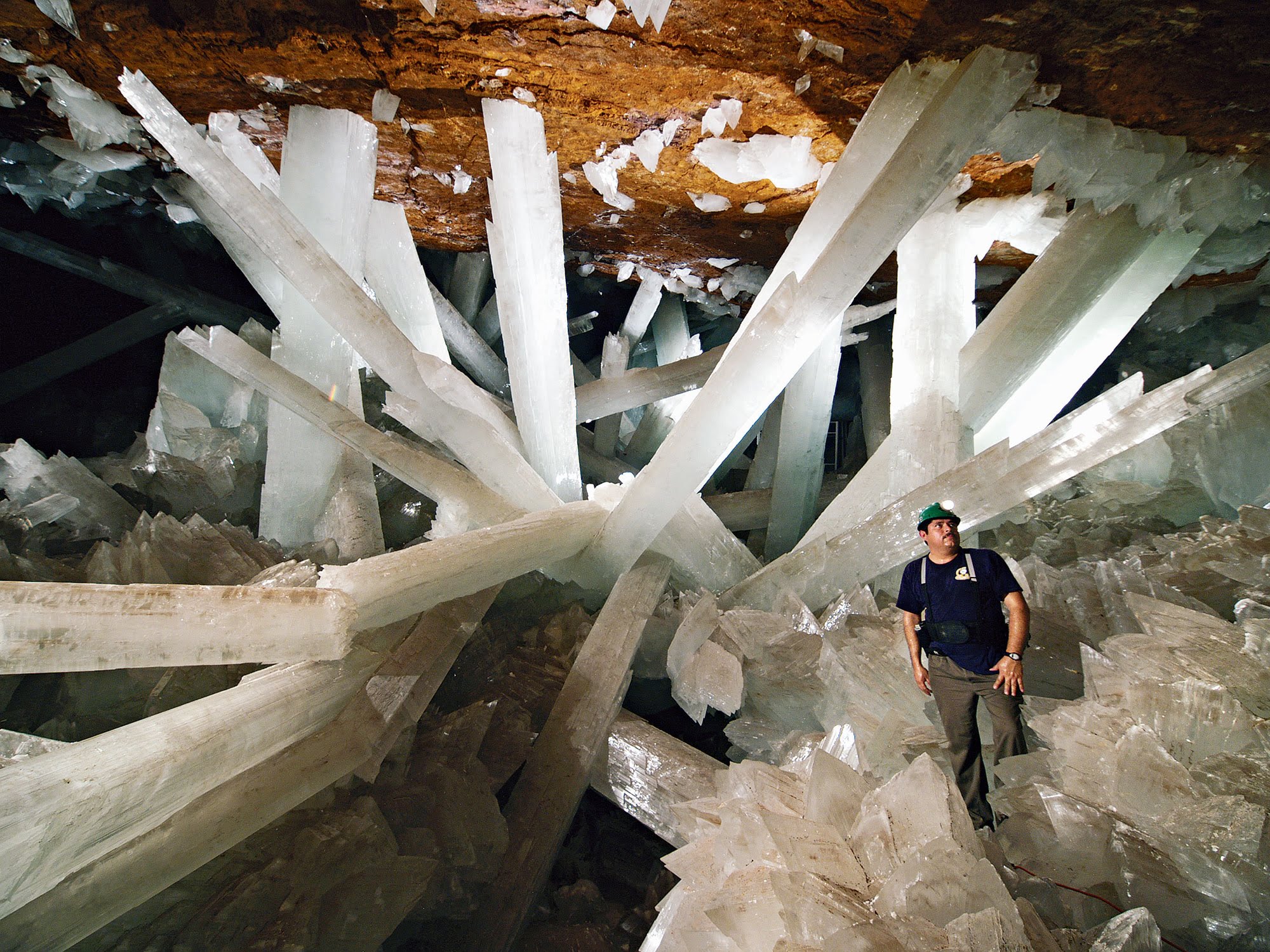If you ever get a chance to visit the Giant Crystal Cave in Mexico, you should do it. And try to get a crystal from it. The cave is the largest natural crystal source in the world. The caves are located underground, nearly 1,000ft under the surface in Mexico.
They are extremely hot, one factor that makes them hard to explore for visitors. The largest known crystal found in the caverns is a crystal that is 39ft in length, 13ft in diameter, and weighs 55tons.
The crystal cave is beautiful, but deadly. We know humans have been using crystals for thousands of years.
Located nearly 1,000ft beneath the Sierra de Naica Mountain in Chihuahua, Mexico, the crystal cave is home to the largest source of the mineral in the world.
Yes, many of these caves are long and wide enough to walk across. But explorers are not so welcomed.
What You Need to Know about the Caverns
The Cave of the Crystals is connected to the Naica Mine, 980ft below the ground in Naica, Chihuahua. The mine has worked for centuries, but the caves were not discovered until the year 2000.
Two miners, pursuing traces of silver, broke into the extensive subterranean chamber. Several days later, an iron door was erected in order to protect the entrance.
![]()
The cave is often referred to as singularly, but it is made of three co-joined caves. One is far larger than the others.
The gigantic cavern is home to towering sacks of selenite, rising so tall that humans appear miniscule in comparison.
These crystals have experienced steady slow growth over the past half a million years. There is a giant pool of magna some 3 miles under the surface. They became flooded over time as a result of groundwater seeping in. This water was rich in gypsum minerals, and the heat generated by the magma worked like a cooker.
This helped maintain a steady heat for more than 500,000 years. This has helped the gypsum in the water to transform into translucent selenite crystals. That is what we see today.
Beneath the cave still lies the pool of magma, rising up from the Earth’s core. The mine is still active, and if you want to visit, you need a special approval. More on that below.
Can you visit the Caves?
Well, if you are a cave explorer, do not rush to pack your bags. Visiting the crystalline wonders is almost impossible. You need a previous approval. But for all their beauty, these caves have the makings of a death trap.
How Stuff Works says that to enter the cave, you need to wear a special cooling suit. Tourists are not permitted, and scientists have to get a special permit.
![]()
The cave has 90 to 99 percent humidity, and the temperature can rise as high as 136 degrees Fahrenheit or 58 Celsius. There is no natural light inside it, and the air is acidic.
All of that makes it dangerous and deadly for human beings.
The conditions of the cave have helped the minerals flourish. At the high temperature, anhydrite remains stable. But at lower temperatures, the mineral can dissolve and reform as gypsum.
The place is so humid that a visitor who lingered too long risks having fluids condense inside his or her lungs. And that can be fatal.
Fun Facts about the Crystals and Caves
Let’s revisit some of the fun facts about the crystalline caves.
– They were discovered in April 2000 by miners excavating a new tunnel for the Industrias Penoles mining company
– The depth of the cave is 980 feet under
– The main chamber contains giant selenite crystals, which is one of the largest natural crystals ever found
– The largest crystal found to date in the cave is 39ft in length, 13ft in diameter and weighs 55tons
![]()
– The natural marvel is rarely accessible because of the conditions
– Temperatures at the cave can reach up to 58 Celsius and humidity is between 90 and 99 percent
– Scientist Juan Manuel Garcia Ruiz studied tiny pockets of fluid trapped inside to learn how the crystals grew to such gigantic size
– In early 2017, researchers reported finding dormant microbes inside the crystals, and they believe they have been trapped inside for at least 10,000 years and probably as long as 50,000 years
– The cave itself was featured on the Discovery Channel program, in an episode Naica: Beyond the Crystal Cave in February 2011
– In February 2017, Penelope Boston reported that mining operations had ceased and that the caves have re-flooded
– The accessibility of the cave is dependent on the mine’s water pumps. When mineral exploitation is ended in the area it was likely pumping would stop and water level allowed to rise again



